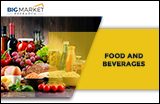
Report on the Chinese Beverage Industry 2017
- ASK3247198
- 132 Pages
- August 2017
- Food and Beverages
Beverages are fluids made for humans and animals that are packaged into predetermined amounts and are either available for immediate consumption or require mixing with water. Non-alcoholic beverages, of which this report focuses, are defined as beverages that contain less than 0.5% alcohol. Beverages may take the form of liquids, solids or syrups, with their primary purpose being to quench thirst, provide nutrition or alter users’ mental states in a positive manner.
The Chinese beverage industry saw beneficial developments in 2016, with main economic indicators experiencing stable growth. The Chinese beverage industry produced a total of XX million tons of product, a XX% growth over the previous year. Retail figures for drinks reached a total of CNY XX billion, a XX% growth over the previous year. Beverage companies of scale reported a total operating income of CNY XX billion, a XX% growth over the previous year, with CNY XX billion in profits, a XX% growth over the previous year.
According to National Economic Statistics standards, the Chinese beverage industry is divided into carbonated drink production, fruit and vegetable juice production, milk beverage and plant protein beverage production, solid beverage production, tea beverage production, other beverage production and the packaging industries for each type of beverage previously mentioned. The Chinese beverage industry produced a total of XX million tons of carbonated drinks, a total of XX million tons of drinking water and a total of XX million tons of fruit and vegetable juice.
The Chinese beverage industry possesses immense potential, with low-calorie drinks, healthy drinks, cold drinks and lactobacillus drinks’ prospects looking particularly bright. The industry is expected to reach a total of CNY XX billion by 2022.
1 2012-2016 beverage industry developments
1.1 Development history
1.2 Operational status
1.3 Number of companies
1.4 Production volumes
1.5 Product retail analysis
1.6 Product structure
1.7 Sales income
1.8 Profits
2 2012-2016 segment beverage industries
2.1 Bottled water
2.1.1 Industry development
2.1.2 Number of companies and losses
2.1.3 Production volumes
2.1.4 Sales income
2.1.5 Profits
2.1.6 Regional consumption characteristics
2.1.7 Bottled-water related standards
2.1.8 Main quality concerns
2.1.9 Company case studies
2.1.9.1 Nongfu Spring
2.1.9.2 Master Kong
2.1.9.3 Wahaha
2.1.9.4 CR Cestbon
2.1.9.5 Tibet 5100
2.1.9.6 Mt. Kunlun Mineral Water
2.1.9.7 Uni-President
2.2 Carbonated beverages
2.2.1 Industry development
2.2.2 Number of companies and losses
2.2.3 Production volumes
2.2.4 Sales income
2.2.5 Total profits
2.2.6 Regional consumption characteristics
2.2.7 Carbonated beverage standards
2.2.8 Quality concerns
2.2.9 Company case studies
2.2.9.1 Coca Cola
2.2.9.2 Pepsi
2.2.9.3 Feichang Cola
2.3 Tea beverages
2.3.1 Industry development
2.3.2 Number of companies and losses
2.3.3 Sales analysis
2.3.4 Sales income
2.3.5 Total profits
2.3.6 Regional characteristics
2.3.7 Tea beverage standards
2.3.8 Quality concerns
2.3.9 Company case studies
2.3.9.1 Master Kong
2.3.9.2 Uni-President
2.3.9.3 Tianwu Foods
2.3.9.4 Jiaduobao Beverages Co.
2.3.9.5 Jinmailang Beverage Holdings Co.
2.3.9.6 Wanglaoji Pharmaceuticals
2.4 Fruit and vegetable juices
2.4.1 Industry development
2.4.2 Number of companies and losses
2.4.3 Production volumes
2.4.4 Sales income
2.4.5 Total profits
2.4.6 Regional consumption
2.4.7 Fruit and vegetable juice standards
2.4.8 Quality concerns
2.4.9 Company case studies
2.4.9.1 Huiyuan Juice Group
2.4.9.2 Yeshu Group
2.4.9.3 Coca Cola
2.4.9.4 Uni-President
2.4.9.5 Nongfu Springs
2.5 Protein beverages
2.5.1 Industry development
2.5.2 Number of companies and losses
2.5.3 Production volumes
2.5.4 Sales income
2.5.5 Total profits
2.5.6 Regional consumption
2.5.7 Protein beverage standards
2.5.8 Quality concerns
2.5.9 Company case studies
2.5.9.1 Yinlu Foods
2.5.9.2 Lulu Holdings Co.
2.5.9.3 Yeshu group
2.5.9.4 Weiwei Food and Beverages Co.
2.5.9.5 Yili Group
2.5.9.6 Mengniu Group
2.5.9.7 Wahaha
2.6 Solid beverages
2.6.1 Industry development
2.6.2 Number of companies and losses
2.6.3 Sales analysis
2.6.4 Sales income
2.6.5 Total profits
2.6.6 Regional consumption
2.6.7 Solid beverage standards
2.6.8 Quality concerns
2.6.9 Company case studies
2.6.9.1 Weiwei Food and Beverages Co.
2.6.9.2 Damin Foods Co. Ltd.
2.6.9.3 Nestle
2.6.9.4 Xiangpiaopiao Foods
2.7 Other beverages
2.7.1 Industry development
2.7.2 Sales analysis
2.7.3 Sales income
2.7.4 Regional consumption
2.7.5 Other beverage standards
2.7.6 Quality concerns
2.7.7 Company case studies
2.7.7.1 Red Bull
2.7.7.2 Tiandi Yihao
3 Industry supply chain
3.1 Supply chain overview
3.2 Upstream developments and analysis
3.2.1 Sugar production and prices
3.2.2 Fruit and vegetable production and prices
3.2.3 Grain production and prices
3.2.4 Tea leaf production and prices
3.3 Downstream applications and demands
3.3.1 Resale channels
3.3.2 Demand analysis
3.3.3 Demand prospects
4 Beverage industry problems
4.1 8 challenges faced by the industry
4.2 Innovation as the key to expanding market share
4.3 SME strategies
5 Beverage industry development predictions
5.1 Development trends
5.2 Development predictions
5.3 Development scale
Similar Reports
Driven by improving living standards of people and a fast-growing macro-economy, China has remained the largest beer-consuming country worldwide for the 12th consecutive year since 2003, and the largest beer-producing nation globally in the past years. This report focuses on systematic evaluation and analysis of Internal Risks (arising within the industry development itself) and External Risks (ar...
- Publish Date: November 26, 2014
- $800
Summary Based on products type, the report describes major products type share of regional market. Products mentioned as follows: By Type Microparticulated Protein Modified Whey Protein Concentrate Others Based on region, the report describes major regions market by vendor, products and application. Regions mentioned as follows: North America Europe Asia RoW Based on application, the repor...
- Publish Date: March 1, 2017
- $840
Summary The global Oat Protein market is estimated to reach 1.4 K MT in 2017. The objective of report is to define, segment, and project the market on the basis of type, application, and region, and to describe the content about the factors influencing market dynamics, policy, economic, technology and market entry etc. Based on products type, the report describes major products type share of regio...
- Publish Date: April 15, 2017
- $840